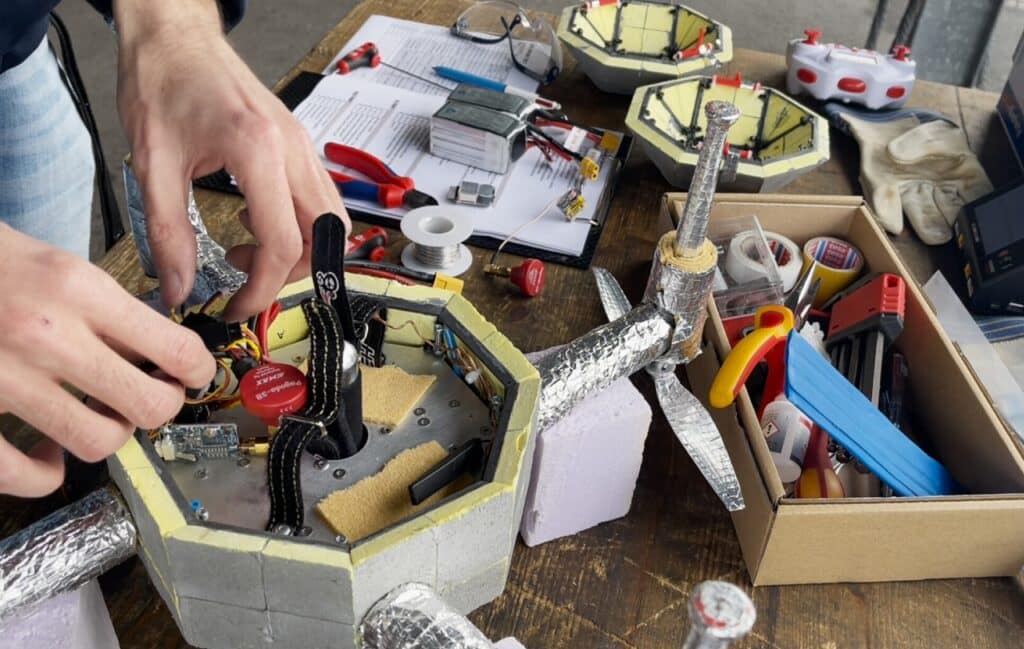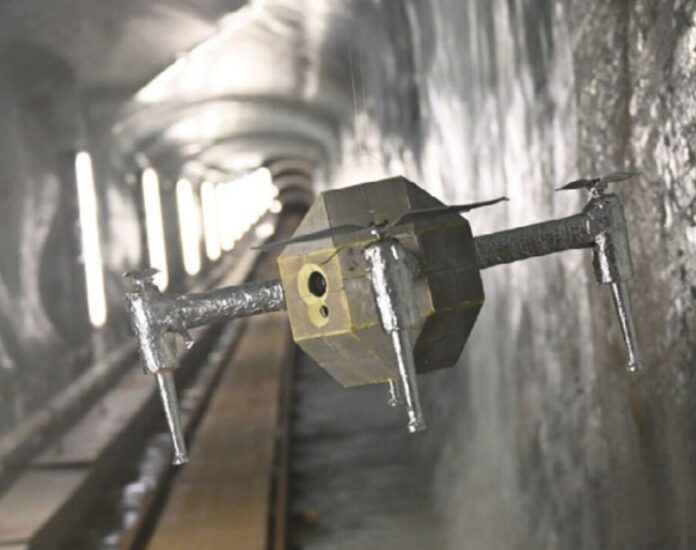All organic things, including artificial objects, are severely affected by extreme temperatures. Natural creatures evolve and use different methods of heat regulation and physiological adaptations to survive in such adverse settings.
The FireDrone, a prototype drone by Professor Mirko Kovac, might be deployed into burning buildings or woodland to assess hazards and deliver critical first-hand data from danger zones. The information would subsequently be given to first responders to assist them in emergency reactions.
The drone is comprised of a unique thermal aerogel insulating material. He includes a cooling system that allows it to survive temperatures up to 200°C for 10 minutes. FireDrone, now in the prototype stage, might someday scope out fires for humans and add risks to bolster firefighting.
Principal Investigator Professor Mirko Kovac, Director of the Aerial Robotics Lab at Imperial College London and Head of the Laboratory of Sustainability Robotics at Empa, said, “Until they enter the danger zone, firefighters can’t be certain of what or whom they’ll find, and what challenges they’ll encounter.”
He added, “FireDrone could be sent in ahead to gather crucial information – noting trapped people, building layouts, unexpected hazards – so that responders can prepare accordingly to keep themselves safe and potentially save more lives.”

Drones are currently used in firefighting to capture overhead imagery, carry fire hoses up skyscrapers, and drop fire retardants in isolated places to prevent wildfire growth. However, current firefighting drones can only fly slightly closer because their frames will melt and their electronics fail.
The researchers understood that drones that could reach considerably closer could assist first responders in preparing to approach burning buildings or woodland. Drones outfitted with cameras and carbon dioxide (CO2) sensors could provide critical information regarding fire patterns and composition.
The researchers were inspired by species that thrive in severe temperatures, such as penguins, arctic foxes, and spittlebugs. They discovered that these animals have suitable layers of fat and hair or create layers of thermoregulating material, allowing them to flourish in harsh environments.
The drone was tested in temperature-controlled chambers and flew near flames at a firefighter training facility. Future efforts to miniaturize and add more sensors to the drone would lead to its use in real-world firefighting missions, perhaps saving lives.
FireDrone may also be utilized in glaciers, arctic regions, and extremely cold climates. To see how the system responds to extremely low temperatures, the scientists also put the robot through its paces in a glacier tunnel in Switzerland.
Even though FireDrone is still in the prototype stage, researchers believe it represents a breakthrough in creating other drones that can endure high temperatures. They validate the technology with important partners and stakeholders in the industrial sector.
The team is now validating the technology with important industrial stakeholders and partners, despite the fact that FireDrone is still at the prototype stage and represents a step ahead in developing other drones that can resist extremely high temperatures.
Professor Kovac said, “Environmental factors like temperature often limit the application of drones. We demonstrate how to overcome this and are convinced our findings will help unleash drones’ future power for extreme environments”.
Researcher said, “Deploying robots in extreme environments provide great benefits to reducing risks to human lives, and who better to look to than animals that have evolved their ways of adapting to these extremes using inspiration from how animals keep cool in the heat.”
The conclusion shows that A revolutionary aerial robot uses high-performance PI aerogel insulation to function in harsh temperature settings, overcoming limits in previous systems. This deployment could help emergency services by giving critical information to analyze situations before approaching danger zones, reducing the risk to human life.
Journal Reference:
- Sam Bodry, Fabian Wiesemüller, etal. FireDrone: Multi-Environment Thermally Agnostic Aerial Robot.Advanced Intelligent Systems.DOI:10.1002/aisy.202300101
